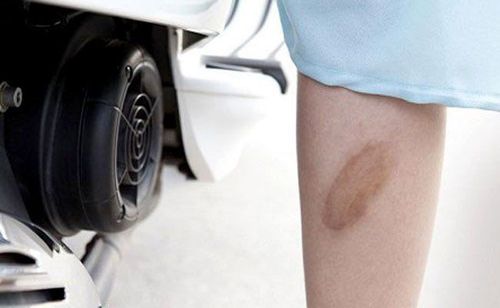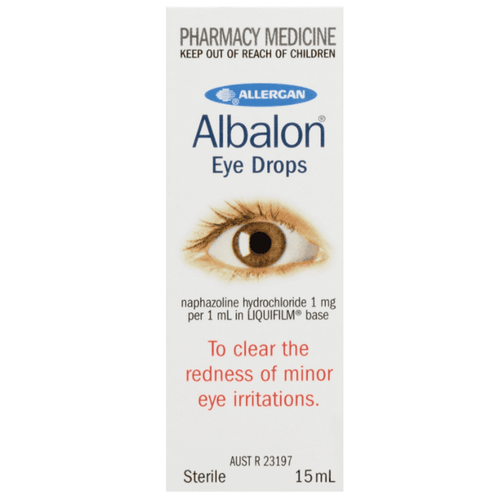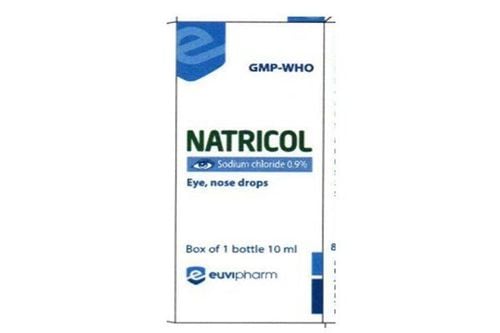This is an automatically translated article.
The article is professionally consulted by Master, Doctor Hoang Thanh Nga - Department of Medical Examination and Internal Medicine - Vinmec Ha Long International General Hospital.
Eye injury is a common phenomenon in daily life, caused by many different causes. Depending on the classification of eye injuries, if not treated promptly, it can affect vision. In our country, eye injury is the second leading cause of blindness.
1. What is an eye injury?
Eye trauma is an injury to the eye caused by various mechanical, physical and chemical causes. Eye trauma usually occurs to the eyelids, lacrimal glands, and eyeballs due to contusion or trauma.
Eye damage can range from very mild like soap in the eye to more serious situations like permanent vision loss or eye damage. The injuries caused by eye trauma are often complicated, have severe sequelae, and have a high rate of blindness.
Eye injuries can arise in many different circumstances, of which the most common are daily-life accidents (70%), work accidents (25%), school accidents, traffic accidents. or accidents when participating in sports... Characteristics of some types of eye injuries:
Eye injuries in industrial production are often caused by metal shards thrown from rotating machinery. such as lathes, grinders, milling machines... causing eye injuries with intraocular foreign bodies. Eye injuries in agricultural production are often characterized as very serious, due to bacterial infections, especially green pus bacilli because the agents causing injury are steel wire, sickle, scythe... contaminated with dirty soil. and animal manure. Fire injuries (5%) are complex, often bilateral, have a high risk of infection, and are associated with multiple coordinated systemic lesions.

Trực khuẩn mủ xanh gây chấn thương mắt
2. Classification of eye injuries
Classification of eye injuries according to the mechanism of injury:
Concussion trauma: Injury to the eye caused by a blunt object impacting with great acceleration, causing contusion, bleeding or tearing of the eye's organs. Injuries of this type change the pressure in tissues and tissues, so the fracture or tear is usually at the weakest point or opposite the affected site. Piercing wounds: Eye injuries caused by sharp objects impact with great acceleration, causing cuts or tears at the impact site. A wound that penetrates the entire tissue is called a penetrating wound. Depending on the agent causing the wound, the agent still exists in the tissue or not, the penetrating wound has a foreign body or no foreign body. Classification of eye injuries according to anatomical location in the affected area:
Ocular trauma: damage to the ocular capsule and other components of the eyeball. The eyeball is a visual receptor, with a very special and sophisticated structure, so when this area is damaged, it often leaves severe sequelae, affecting visual function. Injury to the eyeball appendages: damage to the oculomotor muscles, eyelids, orbital bones, lacrimal apparatus, blood vessels, tissues and orbital nerves... the patient's visual and aesthetic function. Adnexal involvement is more common than ocular involvement and is often associated with other head and facial lesions.
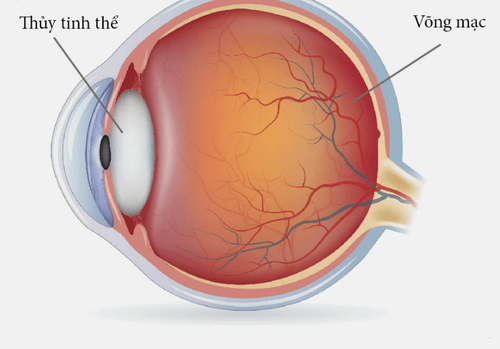
Chấn thương nhãn cầu gây nhiều biến chứng nguy hiểm cho mắt
3. Some causes of eye injury
Chemical exposure or burns can result from liquid splashing into the eyes. Many chemicals such as soap, sunscreen, tear gas... merely irritate the eyes, not causing permanent damage. However, chemical burns are strong acids and corrosive alkalis will cause serious and lasting damage to the eyes: Acid (sulfuric) or alkali (alkaline in drain cleaners, ammonia) may splash into the eyes. . Rubbing your eyes when hands are contaminated with chemicals. Exposure to aerosol sprays such as pepper spray or hairspray. Subconjunctival hemorrhage: hematoma on the surface of the white of the eye. The sclera is covered by the conjunctiva, which is a transparent vascular membrane that lies over the sclera. Trauma can also be spontaneous, and the extent of bleeding is not necessarily related to the extent of the injury. Corneal scratches: People with corneal abrasions can be caused by "stabbing" in the eye by a toy, metal object, child's fingernail, tree branch, or by wearing contact lenses for too long. Traumatic iritis occurs similarly to a corneal abrasion but is more commonly caused by a blow to the eye such as a fist, a stick, or a car airbag. The iris is the colored part of the eye, consisting of muscles that control the amount of light entering the eye through the pupil. Eyeball and orbital trauma: involves a very strong force from an object striking the eye and surrounding structures (baseball, eye fist, face kick, tennis ball, cork) champagne or something similar to the eye...): Anterior hemorrhage, orbital fracture, tear in the eyelid or conjunctiva: usually caused by sharp objects or after a fall. Cuts to the cornea and sclera: usually very serious and involve sharp metal or glass objects. Foreign body in eye: small piece of metal, wood, or plastic. Corneal foreign body: foreign body is located on the cornea, has not penetrated into the eye, if the iron foreign body can cause rust on the cornea, it should be treated immediately. Foreign body in the eye: is a foreign body located around the eye but has not penetrated into the eye. Foreign body in eyeball: foreign body penetrates and gets stuck inside eyeball. Ultraviolet keratitis: sources of ultraviolet light that cause eye damage such as soldering irons, tanning machines, sunlight reflected by snow, water or other reflective surfaces, UV rays at high altitudes . Solar retinopathy: occurs due to staring at the sun such as watching a solar eclipse without goggles, in a high state, should look at the sun for a long time...
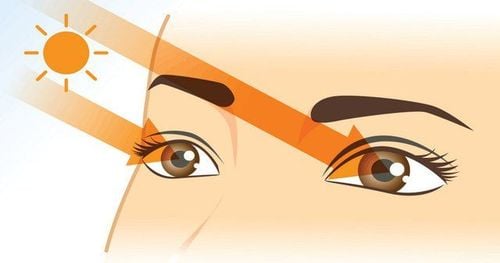
Tin cực tím là nguyên nhân gây viêm giác mạc
4. Treating eye injuries
When an eye injury needs proper initial treatment to avoid more serious damage.
With foreign body - cornea: need to avoid rubbing the eye immediately because rubbing the eye can make the foreign body stick deeper or scratch the cornea. Should blink into a glass of clean water to help the foreign body drift out, if not effective, go to an eye specialist to assist in removing the foreign body. In case of eye burns due to any cause, immediately wash eyes with clean water available, wash as much as possible. Except in the case of quicklime burns, the lime must be removed first before rinsing the eyes. Then bandage the eye and go to the hospital, without delay. With eye wounds with viscous mucus, blood should be bandaged and transferred to the nearest ophthalmology hospital, do not wash the eyes and absolutely do not arbitrarily pull out foreign objects inserted in the eyes. Treating eye injuries is complicated, expensive, and time-consuming. However, the results are often not as expected. Therefore, it is necessary to prevent injury and protect the eyes as the most practical measure.
With 10 years working in the field of Ophthalmology, used to work at Thai Nguyen Central Hospital and held the position of deputy head of the department and in charge of the Department of Ophthalmology at Thai Nguyen University of Medicine and Pharmacy. Master Hoang Thanh Nga has a lot of experience in the field of examination and treatment of eye diseases. Currently, he is an Ophthalmologist at the Department of General Internal Medicine, Vinmec Ha Long International General Hospital.
Please dial HOTLINE for more information or register for an appointment HERE. Download MyVinmec app to make appointments faster and to manage your bookings easily.




